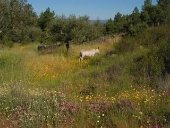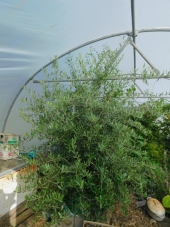
 3
3




 5
5




 1
1




John Daley Bendigo, Australia The Enemy of progress is the hope of a perfect plan
Benefits of rainfall collection https://permies.com/t/88043/benefits-rainfall-collection
GOOD DEBT/ BAD DEBT https://permies.com/t/179218/mortgages-good-debt-bad-debt
 2
2




-Nathanael
 2
2










 2
2






 1
1




 4
4






 1
1








 2
2




 1
1




Chris Holcombe wrote:I have a few different varieties. They’re all from one green world. One is an arbequina. The second one is seascape. I believe the third is universal. They’re all doing great. I could post a few photo's but they're not very exciting. They've grown about a foot each year and I believe this is year 3 for them. The 2 ukranian varieties (seascape and universal) have a better growth habit. They shut down their growth before winter sets in. The arbequina doesn't seem to do that and gets a few new branches killed back a little each year. It makes up for it with pretty robust growth the next season though so it doesn't seem to matter. I've gotten a handful of tiny olives that were mostly pit. I read that's typical for young olive trees so I'm still hopeful they'll make something worthwhile in future years.
 3
3







|
Whatever you say buddy! And I believe this tiny ad too:
The new purple deck of permaculture playing cards
https://www.kickstarter.com/projects/paulwheaton/garden-cards
|






